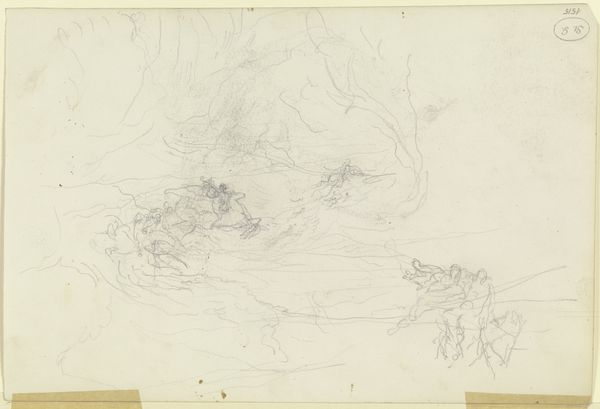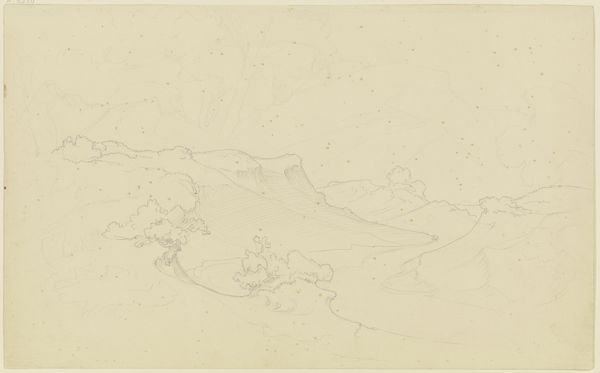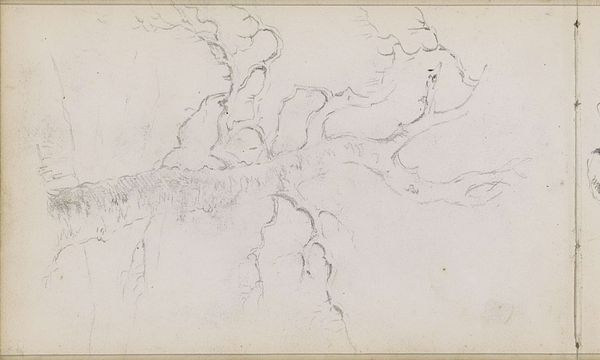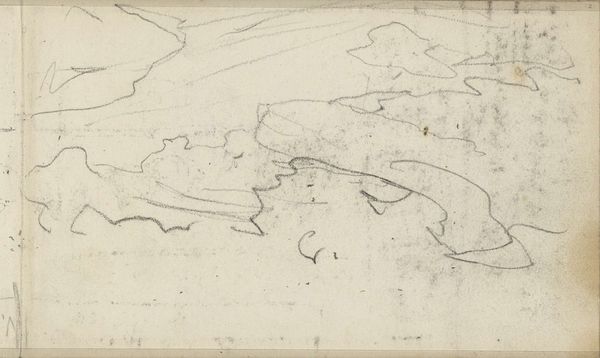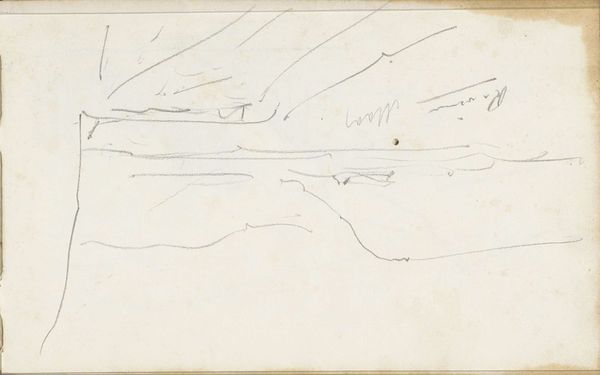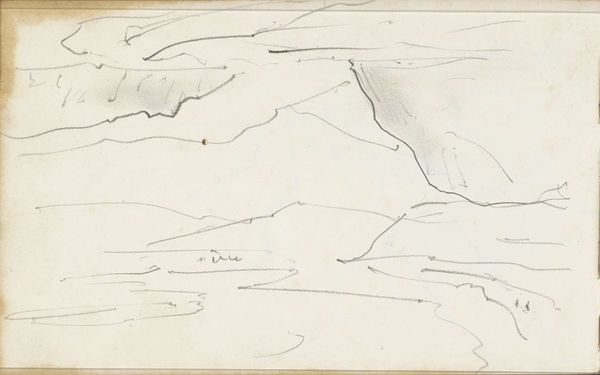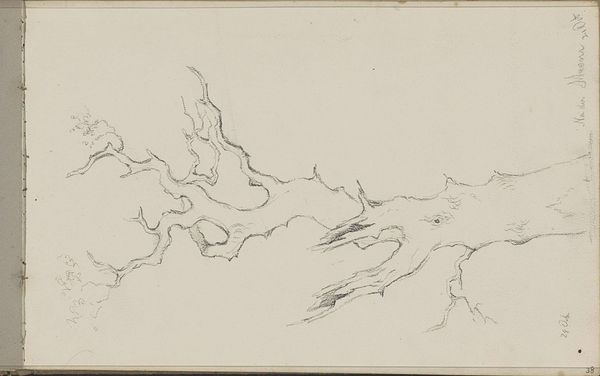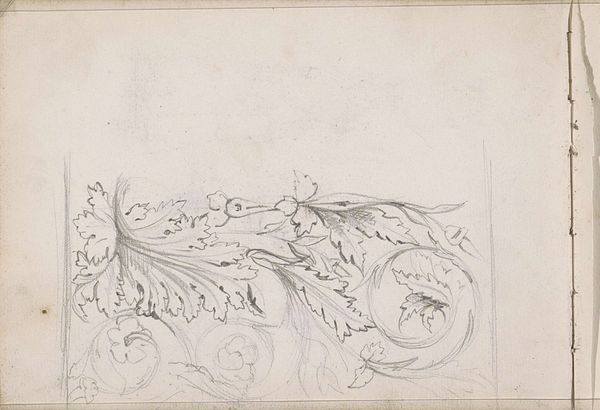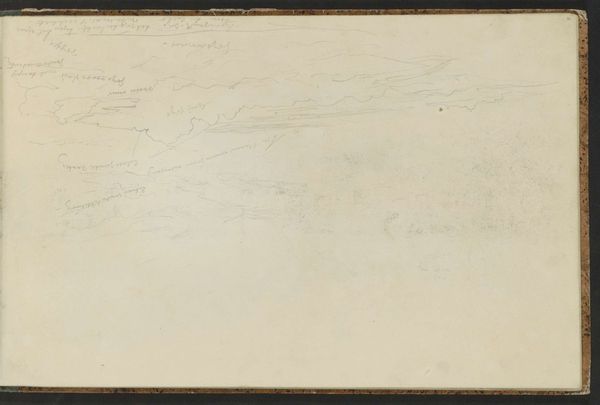
Dimensions: height 214 mm, width 295 mm
Copyright: Rijks Museum: Open Domain
Curator: Here we have “Berglandschap,” a pencil drawing by Vincent Jansz. van der Vinne, likely created sometime between 1746 and 1811. What do you make of this seemingly simple sketch? Editor: My first impression is of transience. The delicate pencil lines create a sense of something fleeting, like a landscape glimpsed through a misty window. The composition is interesting too, with the soft cloud-like shapes in the foreground and those wiry trees creating a dynamic tension. Curator: The artist was working during a time when the Dutch art world saw increasing French influence. Landscape art was often viewed as an exercise in recording topographical precision. Van der Vinne, however, captures something beyond just geography. Editor: Precisely. The lightness of the drawing style moves beyond mere documentation. Look at the way the lines almost dissolve into the paper. The texture seems so airy; this is much closer to Romantic ideals, emphasizing subjective experience and feeling rather than a straightforward, objective view. Curator: And remember the sociopolitical context, too. Landscapes were also tied to national identity. While topographical works celebrated what was seen as orderly and manageable, wilder views of the type van der Vinne offered were thought of with caution. The educated and political classes looked for views offering more manageable solutions. Editor: True, but even in its muted tones, this pencil drawing seems to emphasize a sublime quality. There's a clear focus on the relationship between nature and emotion. The pencil itself—the line work varies from suggestive shading to definitive contour— creates the image and seems crucial in capturing this idea. Curator: The art market for drawings at that time prized detail and finish, drawings were supposed to look like completed prints. I imagine it was something of a challenge to make art with a seemingly more relaxed quality such as this gain visibility and acceptance in any market. Editor: But there's value here, even in what feels like an unfinished form. The rough application makes one feel close to nature, and indeed also seems like a work produced ‘in’ nature, with spontaneity guiding its execution. I like the overall impression of its quiet energy. Curator: The landscape, as mediated through art, provides a mirror not just to nature, but to the soul. Editor: I'm left considering the subtle and subjective power that line can possess when rendered so deliberately and thoughtfully.
Comments
No comments
Be the first to comment and join the conversation on the ultimate creative platform.
